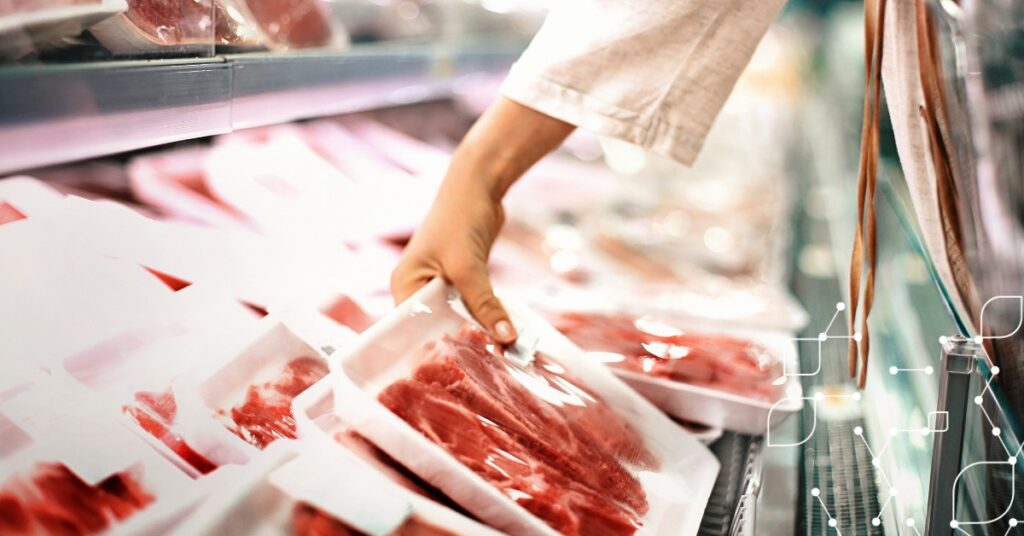
Just-in-time (JIT) inventory systems have become increasingly popular among businesses seeking to streamline their supply chains and reduce waste. In grocery retail, JIT inventory management can help retailers better manage their fresh food inventory and improve their operations. However, implementing a just-in-time inventory system is challenging.
In this article, we’ll take a closer look at the pain points that grocery retailers face with inventory management and how JIT inventory systems, along with fresh item management software, can help address these challenges. We’ll also explore the potential advantages of JIT inventory systems and AI’s role in optimizing inventory management for grocery retailers.
What is Just-in-time inventory management?
Just-in-time (JIT) inventory management is a lean approach to inventory management that emphasizes producing and delivering goods as close as possible to when they are needed to meet customer demand rather than storing large quantities of inventory. The goal of JIT inventory management is to minimize inventory carrying costs and reduce waste while still meeting customer demand.
How Just-in-time Inventory Management Improves Grocery Retail Businesses
Just-in-time inventory management can significantly impact the success of grocery retail businesses. Retailers can improve their bottom line and increase customer satisfaction by optimizing inventory levels and improving order fulfillment processes.
Some advantages of JIT inventory management include the following:
Cost savings:
With JIT, businesses only produce and store what is needed, which can reduce inventory carrying costs and increase cash flow.
Increased efficiency:
JIT can streamline production and delivery processes, reducing lead times and improving order fulfillment.
Reduced waste:
By producing and delivering goods just in time, businesses can avoid overproduction and excess inventory, reducing waste and improving sustainability.
Improved customer satisfaction:
JIT can help businesses respond quickly to changing customer demand, leading to better customer service and higher customer satisfaction.
Overall, JIT inventory systems offer several potential benefits for grocers looking to improve their inventory management processes. However, it’s also essential for retailers to weigh the potential risks and limitations of JIT inventory systems before implementing them. These can include:
Supply chain risks:
JIT inventory systems are vulnerable to supply chain disruptions, such as delays or quality issues, which can cause shortages or stockouts.
Dependence on suppliers:
JIT inventory systems rely heavily on suppliers to deliver goods on time and in the right quantities, which can create risks if suppliers fail to meet expectations.
Limited flexibility:
JIT inventory systems are designed to operate efficiently under specific conditions, limiting businesses’ ability to adapt to changing market conditions or unexpected events.
What are the Four Main Characteristics of JIT?

Just in time (JIT) inventory systems are characterized by several key characteristics that distinguish them from other inventory management approaches. Some of the main characteristics of JIT include the following:
Demand-pull system
JIT is a demand-pull system, meaning that production and delivery are driven by customer demand. This helps businesses avoid overproduction and excess inventory, which can lead to waste and inefficiency.
Small lot sizes
JIT emphasizes producing goods in small lot sizes rather than large batches. This helps businesses reduce inventory carrying costs and improve efficiency by producing only what is needed.
Quick set-up times
JIT focuses on minimizing set-up times for production and delivery, allowing businesses to respond quickly to changing customer demand. By reducing set-up times, companies can become more flexible and responsive.
Preventive maintenance
JIT emphasizes preventive maintenance to keep equipment and facilities in good working order. By preventing breakdowns and downtime, businesses can improve efficiency and reduce costs.
How AI is used in JIT and fresh food inventory management
One of the key benefits of AI in JIT and inventory management is the ability to improve demand forecasting accuracy. Given the nature of JIT inventory systems, accurate demand forecasting is critical to success. By analyzing historical sales data, social media trends, weather patterns, and other relevant data sources, AI algorithms can generate more accurate demand forecasts, which can help retailers optimize their inventory levels and reduce the risk of stockouts or overstocking.
Grocers can also use AI to optimize inventory levels by analyzing sales data, lead times, and other relevant factors. By using machine learning algorithms to identify patterns and trends in sales data, retailers can better understand demand patterns and adjust their inventory levels accordingly. This can help retailers minimize excess inventory and reduce waste while ensuring they have enough inventory to meet customer demand.
AI is becoming an increasingly important tool in JIT and inventory management, helping retailers improve forecasting accuracy, optimize inventory levels, and reduce costs. As AI technology advances, we can expect to see even more innovative applications of AI in this field.
Is Just-in-Time Inventory Management Better?
Just-in-time inventory management can be a powerful tool for grocery retail businesses looking to improve their operations and increase profitability. By reducing waste, improving forecasting accuracy, and optimizing order fulfillment processes, retailers can gain a competitive advantage in the marketplace and provide a better customer experience. While there are some potential drawbacks to relying too heavily on JIT systems, many retailers have succeeded by implementing fresh item management software, optimizing production schedules, and leveraging AI for demand forecasting and inventory optimization. Retailers can build customer loyalty and improve their reputation by minimizing stockouts and ensuring that products are fresh and in good condition.

![[Read next: "Periodic and Perpetual Inventory Systems: Why You Need Both"]](https://no-cache.hubspot.com/cta/default/21714346/interactive-149640430996.png)
![[Read next: "Four Questions to ask When Selecting a Fresh Item Management Software Vendor"]](https://no-cache.hubspot.com/cta/default/21714346/interactive-149640950869.png)






